




Getting around in China
China is a wonderful, yet extremely large place, and often foreigners find it difficult getting around unless you speak Chinese or you know how to use the transport. So here’s our guide for getting around China, from buses to bicycles, we’ll cover everything with some really handy tips.
How to travel on the Subway:
l Many foreigners believe that the subway is by far the easiest form of transport in China, especially if you don’t speak any Chinese.
l Most large cities such as Beijing will have subway stops all over them, which are likely within walking distance of most places that you want to go.
l Subways are also extremely easy to find in the street, simply look for a ‘D’.
l Taking the subway in China is extremely easy as everything in them including the signs are in English or has pinyin, but if you do find yourself lost you can either ask someone or download the below app.
l We recommend downloading a great app which one of our colleagues that is a foreigner uses all of the time, and he finds it extremely useful. The app is called ‘Explore Metro’, but they have versions for the majority of the large cities such as Beijing’s is called ‘Explore Beijing Subway’ (see below). This app contains a whole map of the city’s subway network, including new stations which are being added throughout the year. This app is extremely useful as you can simply select the station that you’re currently at, and the station where you want to arrive, and then the app will provide you detailed instructions on how to get there, including how many stops are needed and the duration of travel, which lines you need to take and also where to transfer if you need to (as seen below), and it also includes how much the journey will likely cost you!
l Travelling by the public transport in China is extremely easy and user friendly as travelling via the subway, bus, taxi or even bicycle can all be paid for using the public travel card for that city. This 公交卡 (gōngjiāo kǎ) or 一通卡 (yītōng kǎ) allows you to travel and pay for all of the aforementioned forms of transport for just a 25 RMB deposit, and an extra 20 RMB for credit. This card can be purchased in all of the subway stations at the ticket office, and you can also top up your credit here or in some of the largest bus stations and supermarkets by simply going up to the counter and handing the card and money over, and they’ll do it all for you. It’s definitely a lot easier to purchase this public transport card rather than buying many individual tickets over your time in China.
l Once you’ve bought your card, you will have to go through a security check, and depending on the line varies the thoroughness of it. If you’re carrying a bag you’ll have to place your bag through the bag scanner at every subway station, however in some stations including the airport expressways, you’ll have to allow the guards to quickly scan your front and back with a metal detector, don’t worry it’s very quick. Also make sure that you’ve put any liquids in your bag, otherwise they’ll ask you to drink it!
l Once you’ve got through security and picked your bags up you’ll arrive at the gate and using your newly bought and topped up card you can simply place your card onto the scanner and the gates will open for you and you can make your way onto the platform.
l Once you’re inside the subway, it’s even easier, every sign and announcement has English versions, so you can easily find your way to the stop you need. Above the platform doors and inside the trains there will be a map for that line stating each station along it and also which stations are transfer stations and what line this will take you to.
l If you didn’t download the app, there is always a subway map inside of the trains themselves that you can look at.
l When queuing make sure to stand to the side, because especially during busy times people will often be rushing off the train and you don’t want to be in the way! You may also find yourself being pushed onto the train, don't worry, it's just a little strange at first.
l When you’re inside the train ensure that you’re not near the door as people often make a last minute rush to get inside the train before it leaves, and you don’t want anything stuck in the doors, so give yourself plenty of time and space to get on and off the train.
l Once you’ve reached the desired station, get off the train and make your way to the exits, there will often be a large map regarding the layout of the subway station and where each of the exits will take you outside. Once you’ve chosen your exit, head towards the gates and scan your card again and the barriers will let you through. Just make sure that you’ve checked how much credit is on your card because you don’t want to run out! And try to remember which exit you came out of if you’re going back to that station, it’ll help you find your bearings much easier.
l The cost of a trip on the subway can cost in the regions of 3 RMB upwards, so only 40p!
l Getting about on the subway is extremely easy, and after a short while and you get your bearings, you won’t need any of the maps at all.
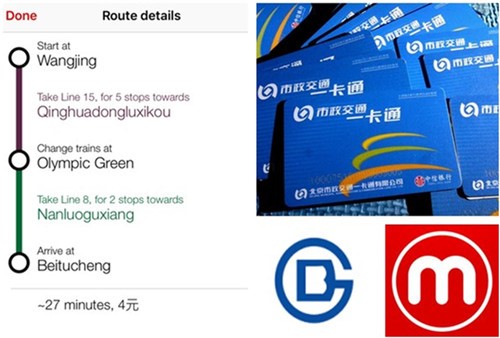
Bus
l All you need to be able to take the bus is your public transport card, the name of the stop you want to get to, and the number of the bus.
l The only problem is that the bus stops in China are predominantly in Chinese only, so you need to be able to at least recognize the name of the stop that you want to go to.
l Many of the main streets in China have an array of different bus stops that you can choose from, however you need to make sure that you’re picking the right numbered bus.
l You can search the bus number online, as the majority of tourist stops state the bus numbers that travel to that location that you can take, and then all you need to do is ensure that it goes from your bus stop to the end location.
l If you can read and write Chinese, or you just want to give it a go, you can always try the map.baidu.com website as this will allow you to choose and select various bus stops and it will show you the best way to get from one place to another using public transport.
l If you would rather have something else as a backup, you can always buy a paper map from large bookstores such as Wangfujing Foreign Language Bookstore or the Zhongguancun Book Store.
l When you’ve got the right bus and want travel, simply get onto the bus and scan your public card onto one of the readers inside and it’ll bleep, and when you’re getting off, scan it again, and when it bleeps again it is showing you that it’s deducted funds from your card, it’s that simple!
l Once you’ve got the number(s) of the bus(es) you need, it can be extremely convenient using the buses in China and can often be much quicker than using the subway. Going via the bus is also extremely cheap, a typical journey could cost around 3 RMB upwards, so just 30p!
l You can also use your public card on bus journeys out of the city to perhaps tourist sites outside of the city!
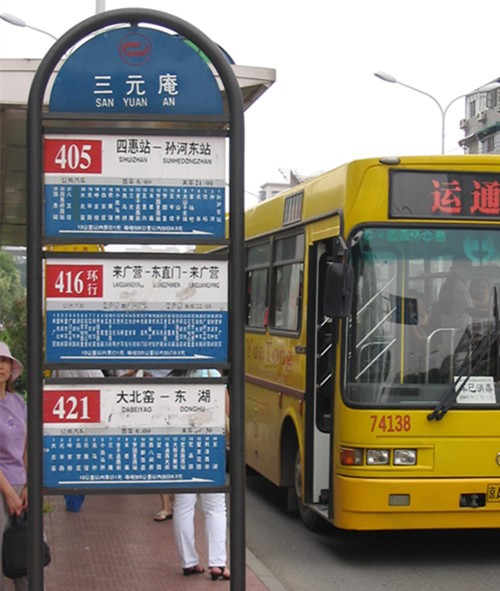
Taxi
l Travelling by taxi can be a great way for people to get directly where they want to go. But for us foreigners it can often be quite a scary experience unless you can speak the Chinese address or can navigate the way with Chinese.
l We believe that one of the best ways for people to get by via taxi in China is to have the Chinese address of where you’re going written down that you can show your taxi driver as it’s highly unlikely that they’ll speak any English.
l What you can always do is have a back-up if the taxi driver gets lost and have the nearest subway station to your desired location written down. But this is quite unnecessary as the drivers are excellent and know an incredible amount.
l Another tip would be to try and avoid the black or unmarked taxis and just simply go for the clearly identifiable public ones, as these private companies often charge a huge amount for a short journey and often get in trouble with the police for picking up foreigners for this reason. Therefore it’s suggested that you should just stick your hand in the air when you see the distinctively coloured public taxi with their red light on in their windscreen, to try and avoid being scammed.
l When you have flagged down the taxi and got inside and handed the driver the address, just sit back at relax, it’s highly unlikely that the driver will try to talk to you, unless you are nearing to the address and he/she just wants to let you know.
l When you have reached your destination you can clearly see how much you need to pay by looking at the monitor in the centre of the dashboard, ensure that the meter is running before setting off otherwise you may have to pay more money! If you are on a business trip or just want a receipt you can ask for a 发票(fāpiào), or you can simply just point to it, and they’ll give it to you.
l Another thing you can do is download Uber, which the Chinese market has recently been bought by the Chinese taxi company called Didi. If you can speak Chinese you can just download Didi and order a taxi that way, but if you don’t you can just download Uber instead, which is extremely useful because you’ll be able to pay online and you’ll be able to select the exact place you want to go to.
l Travelling by taxi is more expensive than travelling via the subway or bus, however it’s really affordable as it’s a really direct route to where you’re going, so there’s no need to walk at all. A typical journey could cost anything in the region of 13 RMB+ which is the minimum fare, and then a basic price will be charged after that. But at night, the price of the fare will increase.
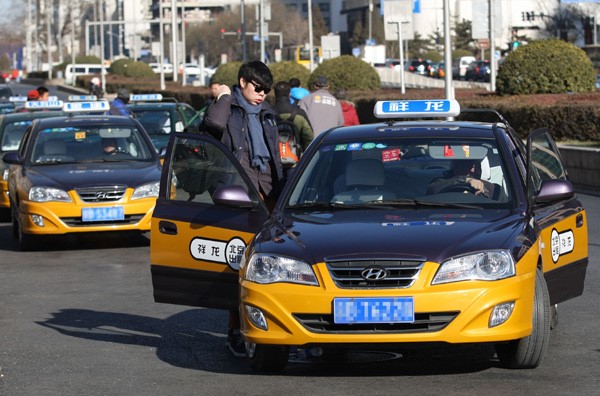

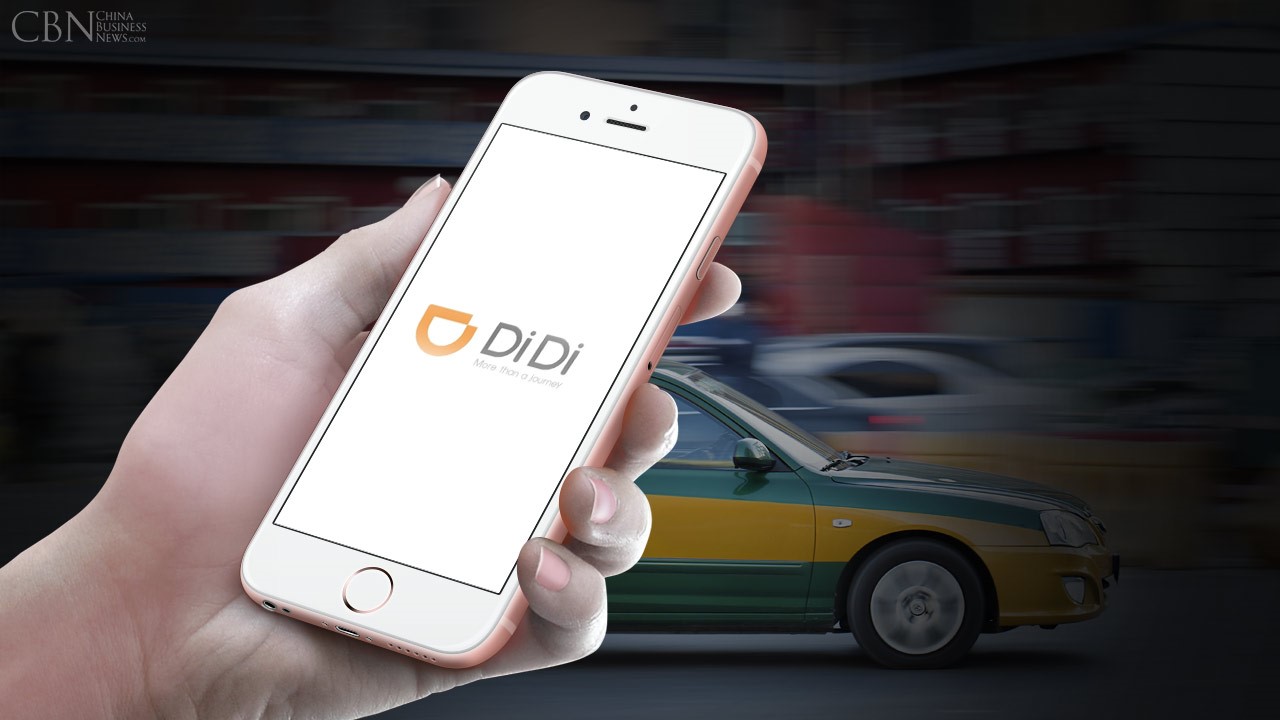
Bicycle
l Anyone that is staying within the city for a long time and wants to be able to rent one of the public bicycles, they’re firstly required to go to and fill in an application form at one of the public bike registration offices that look something like below.
l Before you head there you’ll need to have your passport, 200RMB as a deposit and also your public transportation card which has at least 30 RMB on it, and please make sure that this card has a little C on the top right hand corner of the card.
l When you arrive at the registration office you’ll have to ask for a greeny form and fill it in, you should be able to see it from the window. The form should be in both English and Chinese. Or you could ask for the英文(Yīngwén) version to make sure they don’t give you the Chinese one!
l Once you’ve filled in your application form, hand that in alongside your Transport Card and deposit and you’ll receive your deposit slip.
l There are many public bicycle stops throughout the big cities, especially so around the large tourist attractions and large bus stations/subways, there may also be quite a lot around busy working areas or universities.
l Then you can go up to the bicycles and present your public transport card and you will be able to take one of the bicycles to anywhere you want, but make sure to return it back to another bicycle storage place (it doesn’t have to be the same one you got it from). Usually the fee for rental is free for the first hour and you will then be charged accordingly for each extra hour for just 1 RMB, however the maximum you can be charged in a day is just 10 RMB which is taken away from your transport card.
l If you don’t fancy renting a public bicycle, you could always rent a bicycle from a foreign friendly bicycle store or organization, or you could even buy a cheap bicycle from online or at one of the stores.

Travelling by Train:
l If you’re planning on travelling to different cities during your stay in China, then travelling by train is most probably one of the best options for you.
l The majority of cities and towns throughout China are linked together via the rail network and can be really handy when planning trips around the country.
l Taking the train to another city is a complete experience by itself, you can travel on one of their many high-speed railway routes, or take the sleeper train route!
l One of the best ways to take the train is to first research the train number and date that you will be travelling on, alongside the time of the train’s departure.
l You can do this by simply searching train ticket times online such as through google and there are many websites that are available that provide key information like this.
l We recommend writing down the train number, where you’re going to, and the time, and from here you can either head to a ticket office, which can be found throughout the majority of large cities, or you could go to the trainstation before hand and try to purchase them there instead, however be aware that they may quickly soon be booked up so ensure you have a second train that you can catch if you don’t plan ahead.
l If you go to buy your tickets at the train station, you will need to enter the separate ticket office of the station and once here, you can make your way to the English-speaking windows which cities such as Beijing’s main station, Xi’an and Shanghai have, and they’ll provide any service you require but without the hassle of having to try to speak Chinese. But if there isn’t any English speaking windows available, you’ll have to take note of the choice of seats you can have, you can have high speed, slow speed, sleeper trains, and these come with options such as hard seats or soft seats, so basically 1st or 2nd class.
l Unfortunately the self-service machines won’t work unless you have a Chinese ID, as they don’t recognize foreign passports.
l When you’re purchasing the tickets you can also look at the ticket board in the train station, this will show you how many tickets are left for each compartment in each train for the next 4 days.
l Also ensure that when you go to collect your ticket, purchase your ticket or go to the station to get on your train, make sure that you take your passport with you, as this is now a requirement.
l When you receive your ticket, you can check on the boards what gate you need to go to for when it starts to boarder, make sure to have your passport and ticket ready as they’ll check it for you and scan your ticket.
l When you have your ticket you can check the following details:
l “2016年08月11号“ which is meaning the date of your train is the 11th of August 2016.
l “13:55开” which means your train will leave at 13:55
l “03车012号” which means your seat is number 12 in coach 3.
l So from here you’ll be able to find your gate number, find the right coach and find you seat, you can now just sit back and relax!
l Throughout the journey, especially if it’s a fairly long journey for example Beijing to Shanghai, stewardesses will be walking down the
aisles with hot food which would cost around 100 RMB, so we recommend taking some snacks and drinks with you on the train.
l On the way out of the train and trainstation, you may have to scan your ticket or at least show someone on the exit, just follow what everyone else does.
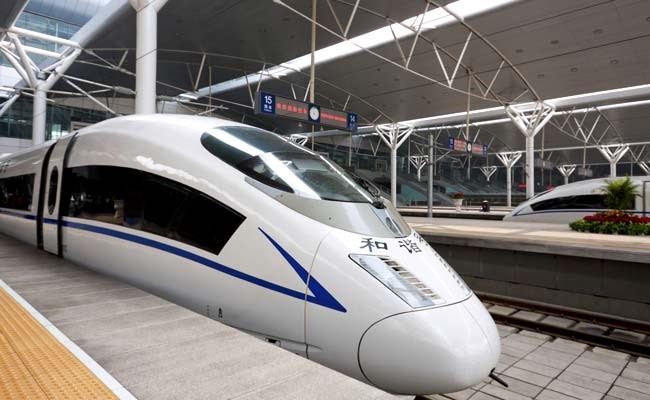
We hope this guide can be useful to you for alleviating any worries or concerns you may have about travelling within China! We’ll be adding more and updating this page with more tips for you!